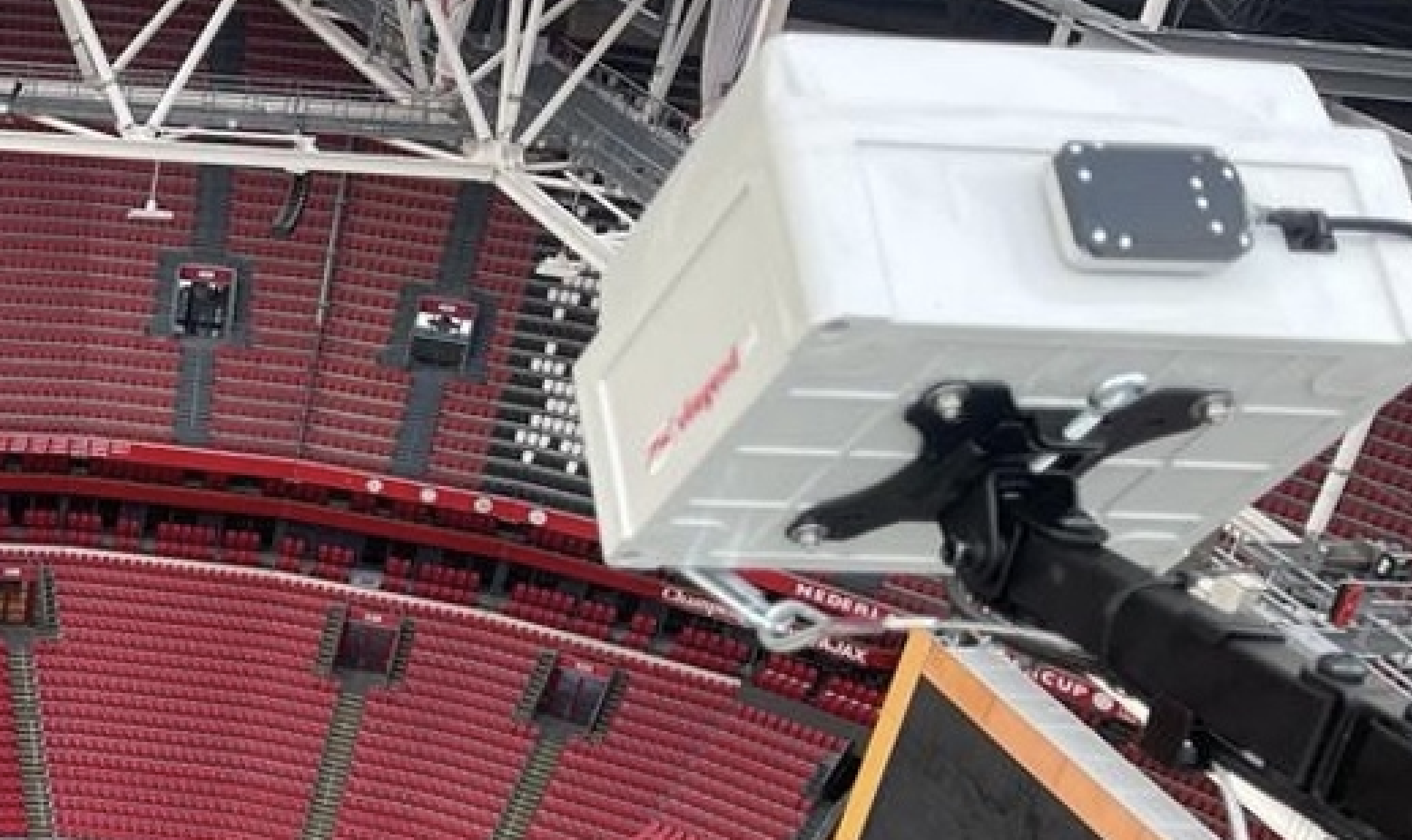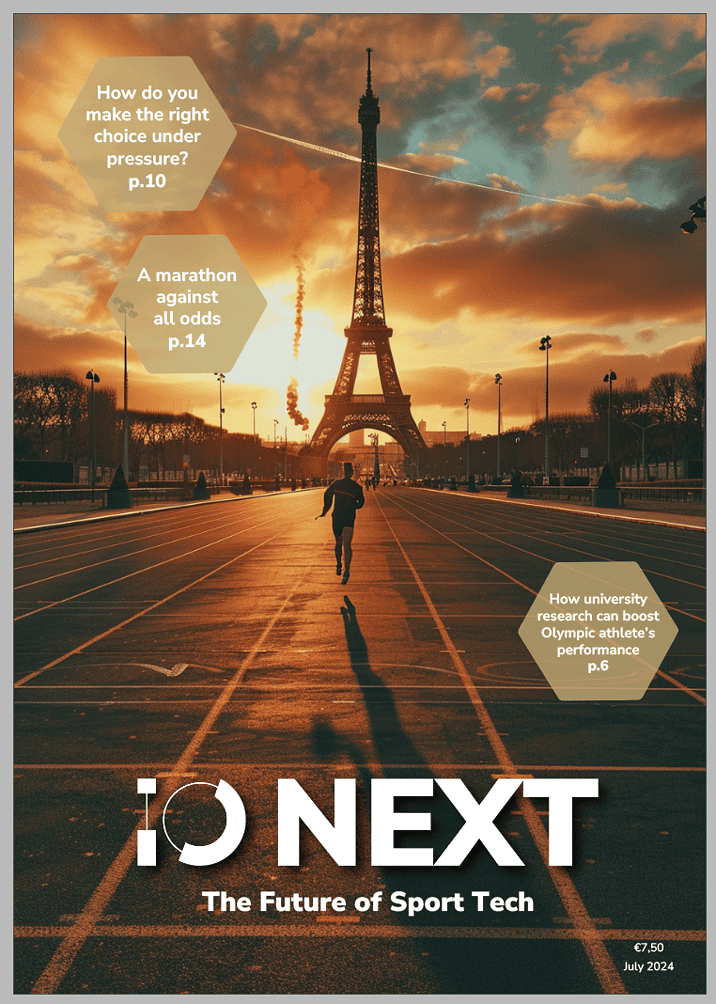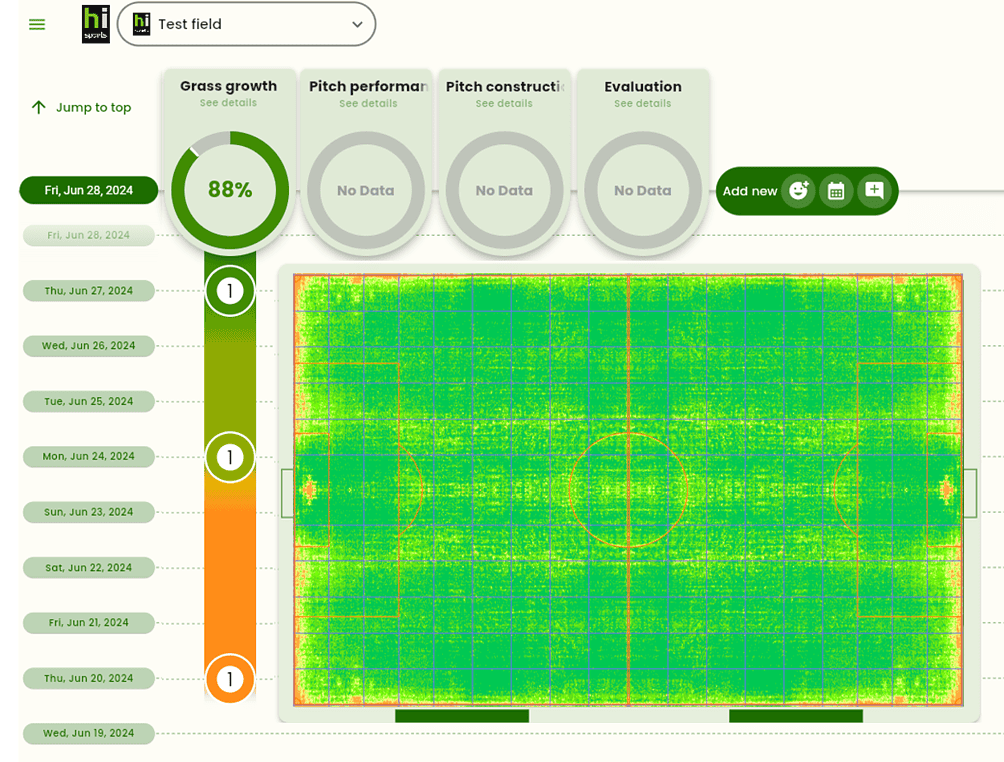
A cutting-edge camera system is ready to revolutionize how football stadiums maintain their grass pitches’ health and quality. Using advanced AI and multispectral imaging, HI Sports’ technology promises earlier detection of issues and better grass management. The result: healthier grass, all year round.
Why is this important?
Predictive maintenance for sports pitches not only offers better grass and fewer injuries, but it also helps sustainability goals.
“We can unburden the field managers with our technology”, HI Sports’ data biologist Joep van Cranenbroek says. “Thanks to our system, they have a much better understanding of the health of their pitches.” HI Sports is already a well-known brand in sports arenas. With its HiPSter performance measurement system and easy-to-use dashboard, the company has supported professional football in many ways for years.
In an innovative leap for sports turf management, HI Sports has now also implemented a sophisticated camera system designed to monitor and predict the health of its grass pitch in the Johan Cruijff ArenA. Initiated a year ago, this project leverages multispectral imaging and artificial intelligence (AI) to gather crucial data previously imposible to measure automatically in a reliable way. Van Cranenbroek: “Before, the fieldmanager had to judge the quality and vitality by eye, a very subjective method.”
A year in the making
The project began with the aim of using data to predict the quality of the grass. Initially, the team faced challenges calibrating the images from the multispectral camera, which captures infrared light humans cannot see. This technology revealed early signs of grass deterioration as far back as September, well before they were visible to ground staff.
Jerry de Groot, the AI expert behind the project, developed models that use this spectral data to identify when the grass started to decline retrospectively. By viewing the infrared spectrum, the camera detects issues earlier than traditional visual inspections or standard RGB cameras. “These traditional cameras see the same as humans: the visible colors instead of the invisible feeling of the grass. That’s where high-end camera systems can make the difference: see what a human can’t see and thus make a reasonable prediction of what to expect.”
There’s something about sport. And so here is a magazine full of technology and sport for you. For ‘IO Next: The Future of Sport Tech’ our team delved into innovations for professionals and amateur athletes.

Market interest and deployment
The potential of this technology has not gone unnoticed. Recent visits to German football clubs like Bayer Leverkusen highlighted significant interest. These clubs are keen to adopt such innovations, seeing the benefits of a system that offers detailed insights into grass health.
Currently, the system employs a single camera in a fixed position, covering 50% of the field. By the next season, the aim is to have a fully validated and released product ready for market. It is incorporated in the HI-dashboard, together with the performance measurement system HiPSter, an open-source platform able to serve the field manager with all data and predictions in one overview.
Technical challenges and solutions
Deploying this high-tech system has not been without its hurdles. The primary challenge was the need for extensive calibration due to varying light conditions and angles within the stadium. “There are dozens of factors influencing how grass can absorb the light”, Van Cranenbroek says. The camera must account for factors like sunlight, shadow, the opposing grass-cutting lanes, and even the color of the stadium seats, which can reflect light differently. “For example, red seats shine much brighter than blue ones, and the grass notices this as well”, De Groot adds. “This is something we have to take into account when calibrating the results.”

The HI Sports team, composed of data scientists, biologists, and project managers, had to correct for these variables to ensure accurate readings. Unlike standard RGB cameras, the multispectral camera can capture more data across different light wavelengths, offering a clearer picture of grass health.
The AI algorithms developed for this system have a robust understanding of these environmental factors, making it possible to distinguish between genuine grass health issues and superficial changes caused by lighting or shadows.
Practical applications and prospects
This technology’s immediate application provides ground staff with a real-time visual map of the pitch, highlighting areas needing attention. For instance, if a section of the field shows signs of stress, staff can proactively address it before it worsens.
Looking ahead, the system has the potential to save costs and resources by optimizing the use of fertilizers and water. With more data, the AI models can eventually predict specific problems like disease outbreaks, allowing for even more targeted interventions.
The continuous monitoring capability also ensures that even subtle changes are recorded and analyzed. Over time, this will build a comprehensive dataset, enhancing the AI’s predictive power.
Brainport Eindhoven
Hans Meeske, HI Sports and Holland Innovative CEO says the project could only be developed thanks to the Brainport Eindhoven ecosystem. “This region has a foundation of deep tech knowledge and practical expertise, where we easily meet each other and find a solution for any challenge. The ecosystem is our R&D ‘department’ for each project. This means we have access to core technology and can accelerate fast. Our multidisciplinary team is proof of that principle. We understand the grass’s biology and the scientific opportunities based on technology, data science, and AI.”
Industry impact and future developments
The HI Sports project exemplifies how technology and data can transform traditional practices in sports turf management. By partnering with industry experts and leveraging the high-end imaging technology also used for medical projects, the team has created a solution that meets the practical needs of field managers while pushing the boundaries of what is possible with AI.
The team’s work also includes a collaborative effort with the Johan Cruijff ArenA, integrating practical insights from field managers to refine the system. “The field managers are always the starting point of such projects as their needs are the basis for new products”, Bart Bruers, project manager of the camera project, concludes. This integration ensures the technology is theoretically sound and practically applicable.
As the project progresses, the goal is to create a scalable product that can be used across various stadiums, providing a consistent standard for grass maintenance and potentially revolutionizing the field. The early success and interest from clubs underscore the significant potential and industry demand for such innovative solutions.
If you want to know more, contact Hans Meeske at HI Sports: [email protected]

